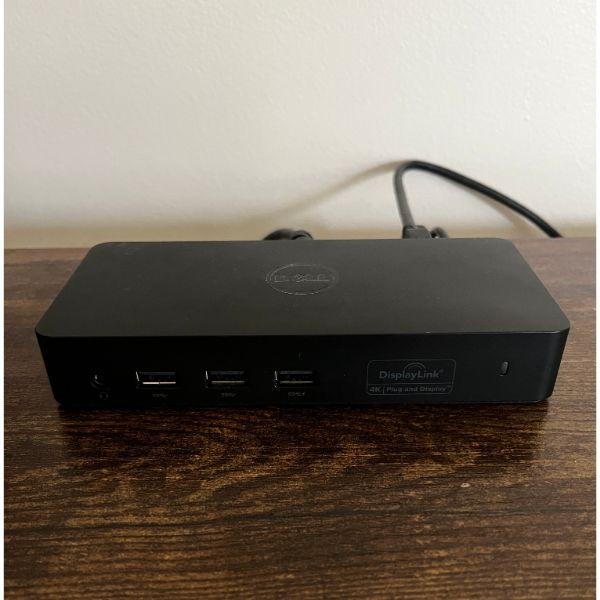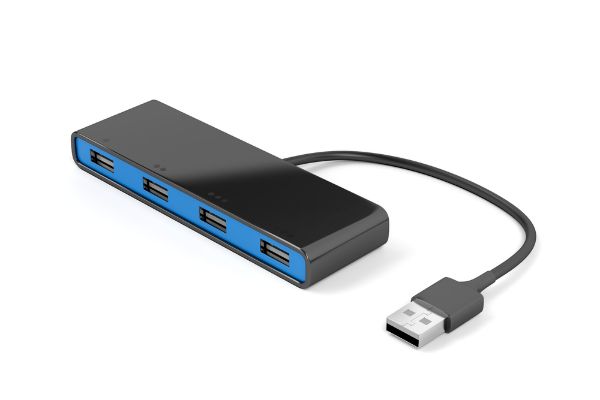Disclaimer: This post may contain affiliate links, meaning we get a small commission if you make a purchase through our links, at no cost to you. For more information, please visit our Disclaimer Page.
Modern desktop computers represent some of the best pieces of technology available today. Although many of them can be expensive, manufacturers develop lines of computers that are affordable to average users, too. Any kind of desktop is the go-to device for work or entertainment across many industries or hobbies, and this is because they can run several kinds of programs or store vast amounts of data.
You can also purchase desktops that developers optimize for specific purposes, which might include gaming, photo editing on a professional level, or graphic design. There is much versatility in today’s desktop rigs, but they do lack some of the major ports you might want to use.
Addressing the aspects of portability or ports and the kinds of features that you usually find with smaller computers is where the typical docking station comes into play. Our article below will discuss what specific purposes manufacturers mean for a docking station to serve.
Additionally, we will discuss how you can use such an accessory with your desktop computer, how USB hubs might be useful, and whether docking stations can help you switch more seamlessly between your desktop and laptop units. To wrap things up, we’ll touch on whether it is possible to turn the desktop itself into a makeshift station for your laptop.
Table of Contents
What Is the Point of a Docking Station?
Docking stations are items that most people tend to associate with laptops, but we will discuss them in the context of desktops in our article here. For the most part, developers created docking stations in order to make laptop computers a bit more like their desktop counterparts.
Some people have laptops that they would like to use nearly all the time. This means that, even though they’ll take the computers with them on the go, they also want to use them as stationary workplaces, too.
While our article will talk about docking stations in terms of their usefulness with traditional desktops, it is important to understand how these devices relate to expanding usage for laptops, too.
Most docking stations are available in order to help laptops have access to a dedicated power supply and additional ports to connect peripherals and other things. There are different types of docking stations. Your basic ones will have a few extra ports for external plugins, but you can get more advanced versions, too.
The bigger docking stations may come with ways for you to attach more monitors, standalone speakers, or another keyboard you might want to use instead of your laptop’s basic one.
Further, you can get stations with USB-C connections for peripherals like printers, scanners, microphones, etc.
Most laptops have ports that allow you to plug things like an external drive or headsets into them directly. Through the use of cable connections, you might be able to hook up these devices to things like other monitors, too.
However, because of their portability, they lack many ways a desktop can use some of the peripherals we mentioned above. This makes docking stations valuable for laptops, but there may be ways that desktops can still benefit from them.
Can You Use a Docking Station With a Desktop Computer?
Yes, it may be possible for you to use a docking station with a desktop.
However, because the form factor is usually something developers make to suit laptops, not all stations on the market may work well with traditional desktop computers. It is always important to research whether your desired unit is compatible with your desktop rig.
You may be able to find some of this information on the site of the manufacturer directly. Even if you can’t, dedicated community tech forums online should be able to help you find the answers you need.
Aside from compatibility, the one you purchase for your desktop should revolve around your use cases and the features you want.
Many of the docking stations you’ll find may use a communication standard that developers made only to talk with laptops and notebook computers.
Typically, it isn’t possible for people to use these kinds of docking stations with their desktops. Some standards should be compatible with both form factors.
However, even if you find a docking station that can swap between a laptop and a desktop, it may not be possible for you to do so without additional equipment.
In short, while there may be a few models of standard docking stations that can work with desktops, you have limited choices based on the specific intention for most docking stations.
Can You Use a USB Hub With a Desktop Computer?
Yes, you can use a USB hub with a desktop computer. A hub might look similar to a docking station to the average user. However, they do differ in some of their applications. Docking stations typically need to plug into a wall outlet to run.
You can think of this like adding a kind of separate, smaller computer to the one you already use as your main device. This is why most people associate docking stations with laptops. Their main purpose is to help turn portable computers into something that resembles a standard desktop.
Hubs, on the other hand, simply expand the number of ports your device has at its disposal. More ports, particularly of various types, means you can connect more peripherals to your machine.
You can use these hubs for plugging in things that will run with your desktop, or you can charge other devices. In this way, you can think of USB hubs sort of like power strips that specialize in helping computers.
If you have several devices that need USB form factor connections, a hub can provide the additional ports that your desktop does not have. Like docking stations, most people think of laptops when they think of USB hubs.
This is because a user will typically plug the hub right into one of the available USB ports already native to the laptop itself.
Once done, the computer owner has access to the remaining ports on the device, and they have expanded their capacity to plug things in by several more ports. Many USB hubs can provide you with over a dozen other connections.
When you use a hub with a desktop computer, the way you set it up may need to be a bit different, and this is due to the usual form factor for desktops. USB ports typically sit on the sides of the laptop, but many desktops have them at the back.
If this is the case for you, you’ll have to plug the hub in, run a cable under your desk, and draw it up to plug it into the rear of your computer.
It is a good idea to remember that not all hubs have cables long enough for you to do this with ease. Although this is something you’ll have to remember when shopping for a desktop hub, there are models you can use with your rig.
Can I Use a Docking Station To Switch Between a Laptop and a Desktop?
Technically, you could use a docking station for this purpose. However, it is probably better and easier for most people to use a KVM switch in conjunction with a typical station.
This switch allows users to keep the same mice, keyboards, and video screens between multiple computers. Thanks to the way KVM switches operate, you can do this without moving or unplugging any cables.
You can still use a docking station to help you set up and operate the switch, but adding this device will make things more flexible for you. Part of the reason for this is that only one system at a time can use a docking station.
This means that although you could use the station to switch between a laptop and a desktop, you would still need to unplug and move things over when you wanted to make that swap. The KVM switch can help you streamline this whole process.
Can I Use My Desktop as a Docking Station for My Laptop?
Although it may be possible to do this, a better option may be for you to forego the traditional docking station accessory. Instead, you could use remote software to control one device with the other.
In short, you just need to ensure that your two computers run on the same operating system and have remote-capable software that one can use to access the other virtually.
For example, you could connect both computers to the same home network, and the laptop can open on the desktop like a program.
If both devices run Windows 10, Microsoft has a great article here about how to do it. Google Chrome also has something similar to this as well.
Then there’s software such as Synergy. That works on several operating systems such as Windows, Linux, and macOS. It is not free software, though.
Conclusion
Docking stations are excellent choices for laptop users who need to try to mimic more functions that desktop users get natively. Although they are something most people will associate with the more portable form factor, there are ways to make them work for desktops, too.
Even when your typical docking station might not, there are some workarounds that we talk about here. Further, USB hubs are also an option that you have to increase the number of devices you can connect to your rig.



